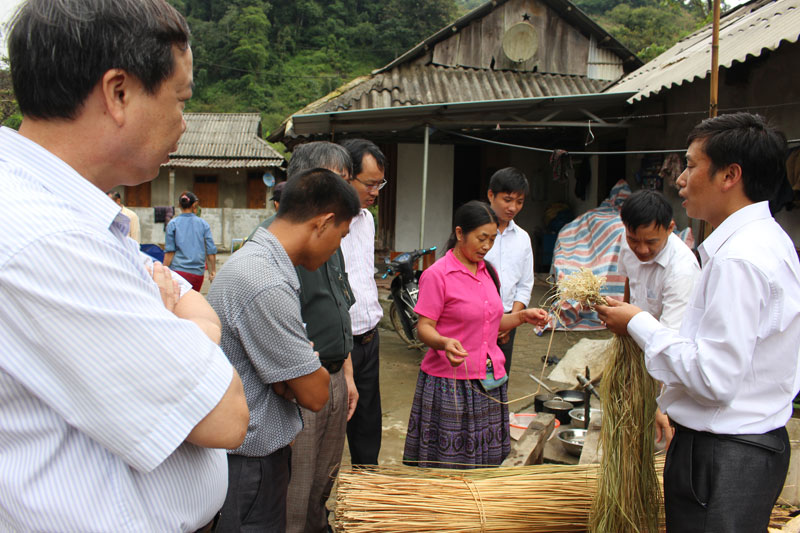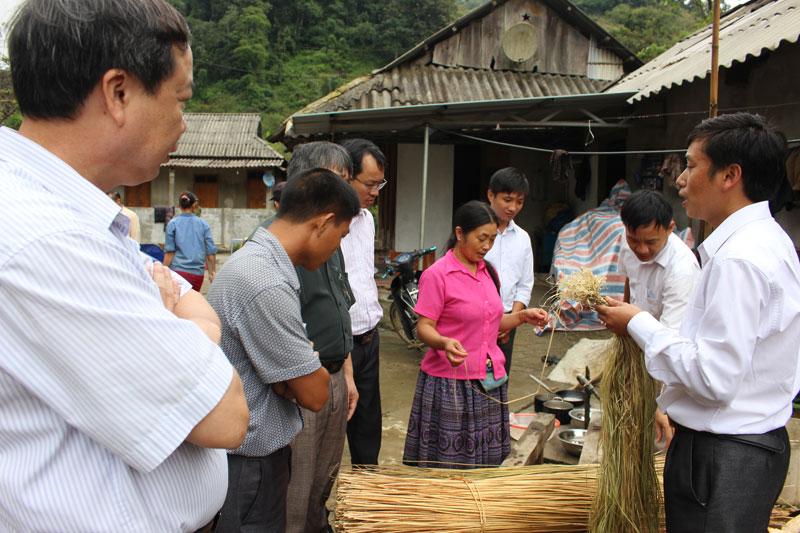



Women in Pa Co Con village, Pa Co commune
(Mai Chau) are introducing the unique products of the Mong ethnic minority made
of natural fiber.
From 2015 to now, the local people in the
village have been aware of the importance of preserving and promoting their
national identities, it is the right direction and sustainable way for choosing
to build a handicraft village. In the whole village, there are 44 households,
39 of which are doing this handicraft job, accounting for 88.6%. The guidance,
propaganda for the offspring, the next generations are particularly taken into
consideration. First, the elderly women, the artists become the direct
instructors to teach their offspring and the young. The following generations
have responsibility and consciousness to preserve and transfer for the next
generations. The current typical follower is Mrs. Ha Mua Y Ganh, born in 1967,
Sung Y Khia, born in 1971, Mua Y Kho, born in 1963, Sung Y Vang, born in 1982.
Mua Y Dai, born in 1971, together with many women in the village, are working
to develop the weaving, embroidery and brocade careers of their national
identity.
With 20 looms in regular operations, the
products are all woven with flax, the patterns are embroidered with patterned
motifs and distinctive images carrying characteristics of ethnic minority
people. The main products of the village are skirts, pants, Mong ethnic shirts,
casual clothes and costumes in festivals, New Year occasion, wedding ceremony
of women and men. The traditional textiles of the village are preferred by
domestic and foreign markets, especially in Europe. The products of the village
have participated in the traditional brocade trade fair of the northern
provinces for foreigners in Hanoi, Ho Chi Minh City, Nghe An, Da Nang for the
purpose of promoting products and connecting markets.
According to Mr. Sung A Mang, the Chairman of
Pa Co Commune People's Committee: At present, the craftsmen and artisans in the
village have been continuing to explore, create and improve patterns with
traditional characteristics of their ethnic minorities for the costumes and
utensils, which are suitable in accordance with cultural customs and meet consumer
tastes with natural materials such as flax.